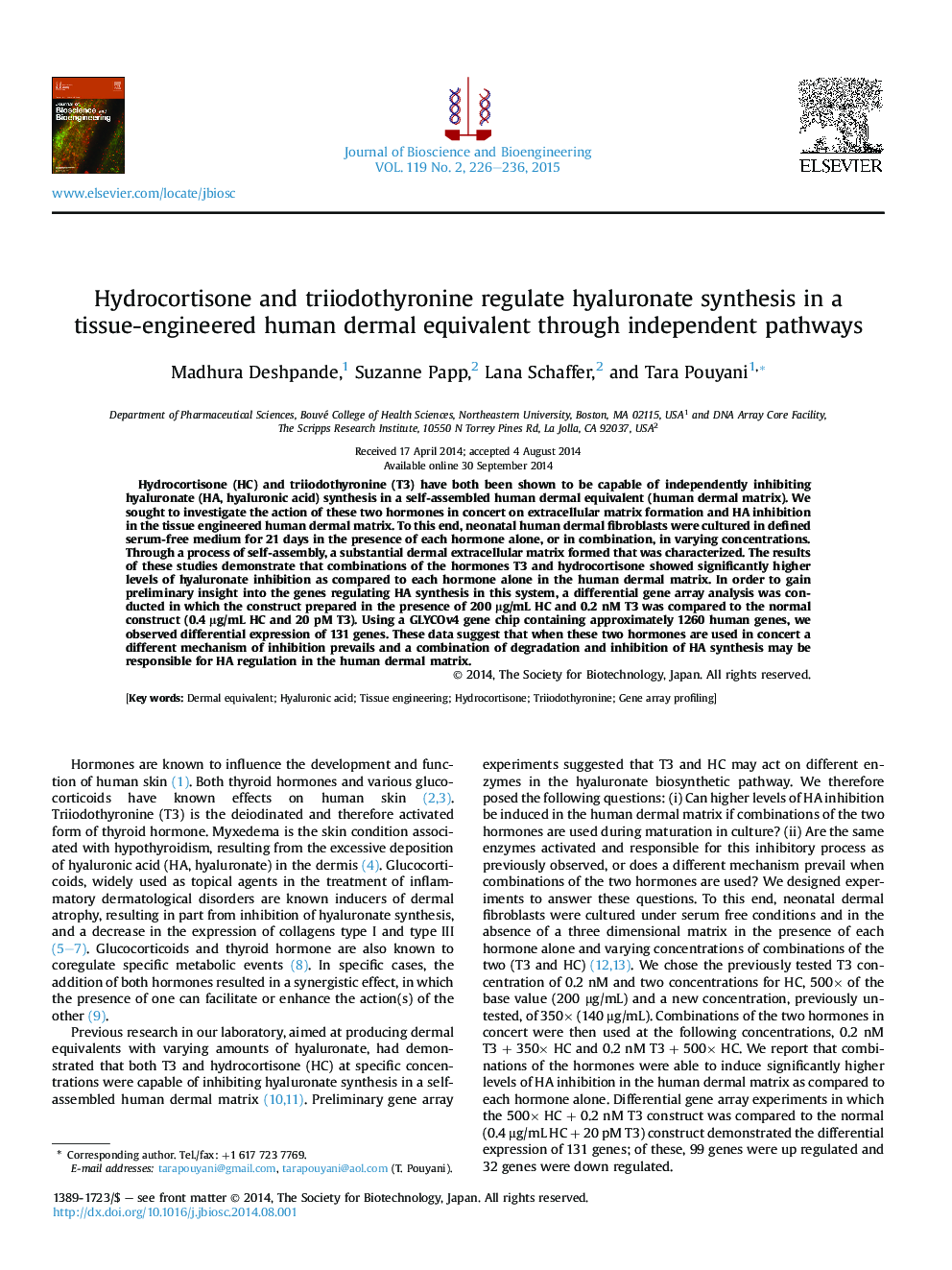| Article ID | Journal | Published Year | Pages | File Type |
|---|---|---|---|---|
| 20376 | Journal of Bioscience and Bioengineering | 2015 | 11 Pages |
Hydrocortisone (HC) and triiodothyronine (T3) have both been shown to be capable of independently inhibiting hyaluronate (HA, hyaluronic acid) synthesis in a self-assembled human dermal equivalent (human dermal matrix). We sought to investigate the action of these two hormones in concert on extracellular matrix formation and HA inhibition in the tissue engineered human dermal matrix. To this end, neonatal human dermal fibroblasts were cultured in defined serum-free medium for 21 days in the presence of each hormone alone, or in combination, in varying concentrations. Through a process of self-assembly, a substantial dermal extracellular matrix formed that was characterized. The results of these studies demonstrate that combinations of the hormones T3 and hydrocortisone showed significantly higher levels of hyaluronate inhibition as compared to each hormone alone in the human dermal matrix. In order to gain preliminary insight into the genes regulating HA synthesis in this system, a differential gene array analysis was conducted in which the construct prepared in the presence of 200 μg/mL HC and 0.2 nM T3 was compared to the normal construct (0.4 μg/mL HC and 20 pM T3). Using a GLYCOv4 gene chip containing approximately 1260 human genes, we observed differential expression of 131 genes. These data suggest that when these two hormones are used in concert a different mechanism of inhibition prevails and a combination of degradation and inhibition of HA synthesis may be responsible for HA regulation in the human dermal matrix.
